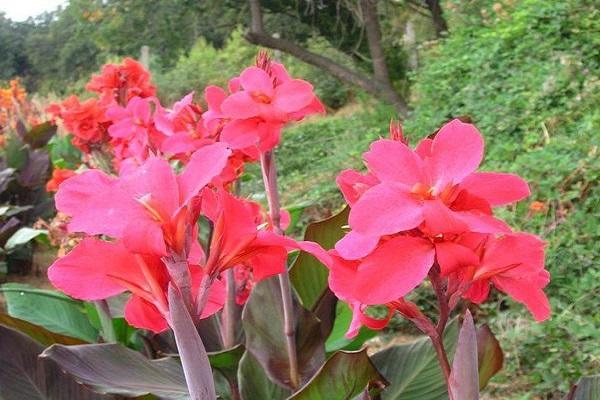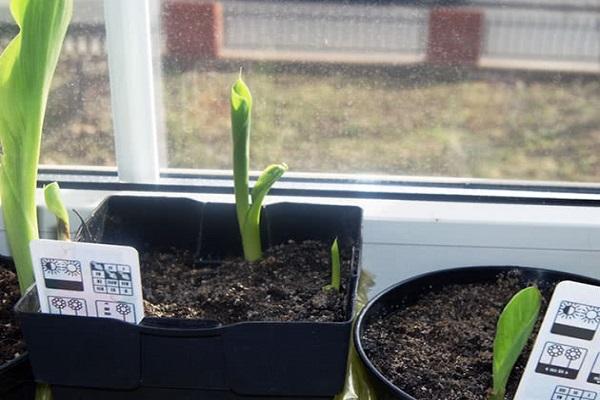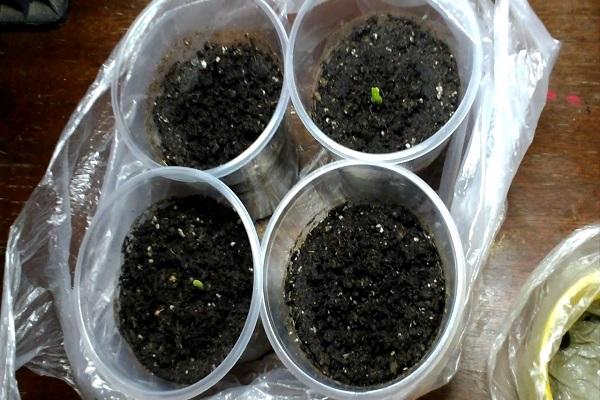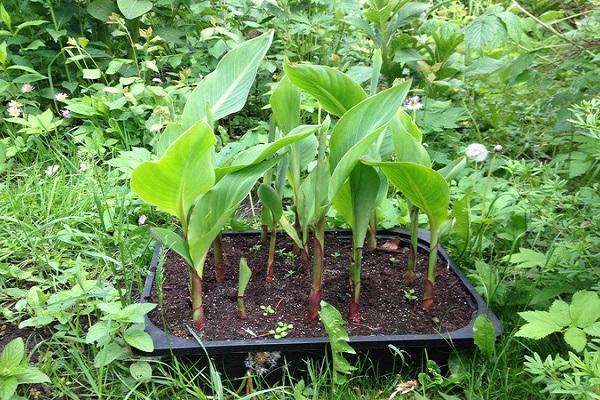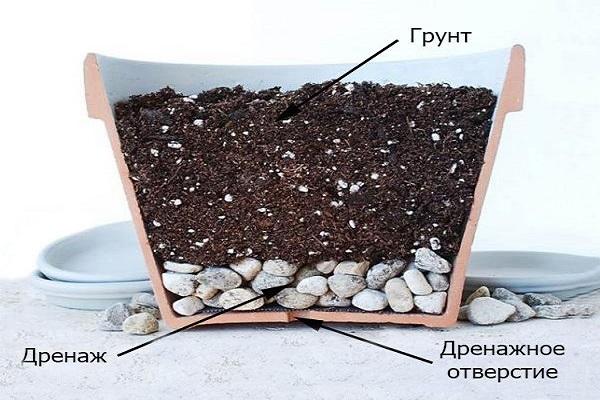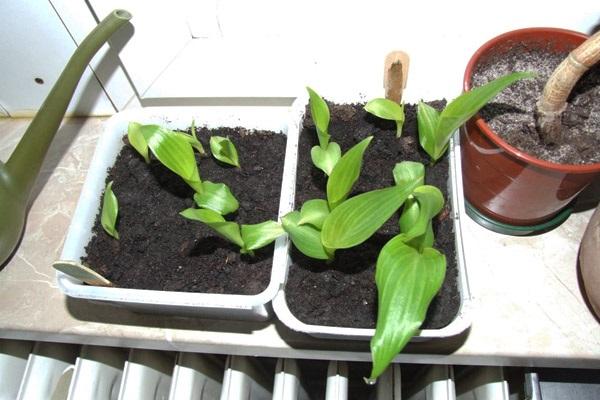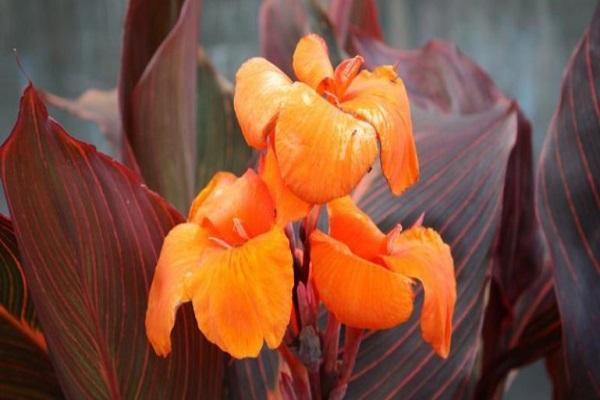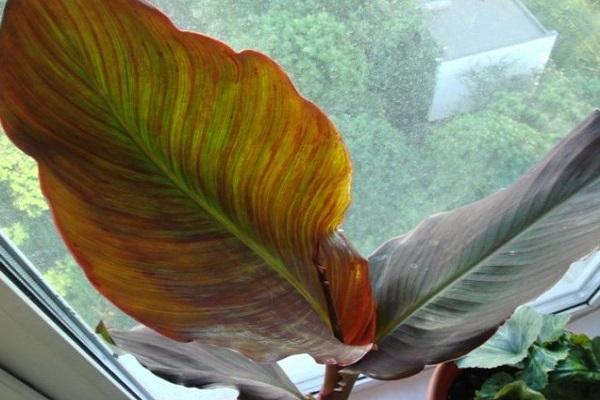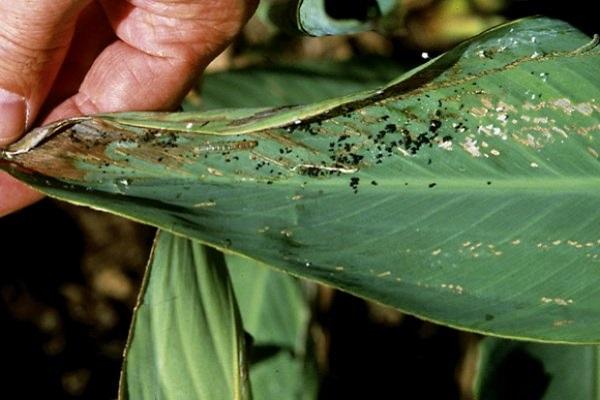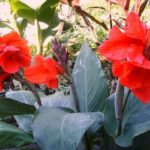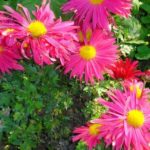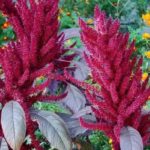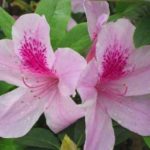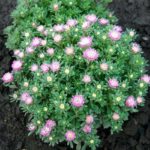Is it possible to keep a canna flower at home and how to grow the plant correctly. Despite its exotic nature, the plant takes root well at home. With proper care, canna will delight you with its bright blooms for a very long time. Although the plant is unpretentious in care, when propagating it you will have to work a little to grow the flower healthy.
- Is it possible to grow canna flower at home?
- Which varieties are suitable for home cultivation?
- Methods for germinating canna
- How to grow canna from seeds
- How to germinate from rhizomes
- Basic landing rules
- Required soil and drainage
- Pot volume
- Timing and technology of sowing and planting root shoots
- How to care for your home canoe
- Care and proper watering
- Formation of a flower
- What pest diseases parasitize the plant: control methods
- Insects on the bushes may include aphids or caterpillars. You can get rid of insects by spraying with insecticides.
- Transfer
- Rest period
- How to propagate bushes
Is it possible to grow canna flower at home?
Cannas can often be found growing in summer cottages. Due to the size of the bush, it can be problematic to keep in the house. The plant requires a lot of space to grow properly. If the apartment allows, then in the fall a flower from the plot can be transplanted into a pot and placed at home. Being constantly warm, the canna will bloom all year round with a break of two months.
To grow the crop at home, only large pots with a diameter of more than 50 cm are used. It’s good if you have an insulated loggia at home, then the flower will have enough space and light. But if not, you can put it on the floor. The main thing is that the plant gets sunlight.
Which varieties are suitable for home cultivation?
There are special varieties for growing indoors that do not grow as large as outdoor varieties.
Homemade canna varieties:
- Livadia is a bush up to 1 m high. The inflorescences are scarlet, large. Up to 25 cm in diameter. The foliage is large. Flowering begins in July.
- America - the height of the stem is 1.2-1.4 m. The petals are red in color, 10-14 cm in diameter. The flowering period occurs in the second decade of July.
- President is a bush up to 1 m high, scarlet inflorescences, 14-17 cm in diameter. The foliage is rich green in color. The flowering period begins in July.
- Richard Wallace - a bush up to 1.2 m high. The petals are yellow with red-brown dashes. Flowering begins in early July.
- Suevia is a plant up to 1 m high. The inflorescences are of a rich yellow hue.The flowering period occurs in the second half of July.
- Andenken an Pfitzer - stem height is 1-1.4 m. The inflorescences are orange-yellow with red dashes. The length of the inflorescence is 30 cm. The foliage is rich green.
- Cleopatra is a low-growing variety up to 1 m high. The petals of the inflorescence are yellow with scarlet stripes.
- Orange Magic - the height of the stem is about 80 cm. The shade of the petals is peach. The inflorescences are small, 7 cm in diameter.
Even homemade canna varieties are never less than 1 m. On average, the height of varieties for growing at home ranges from 1-1.4 m.
Methods for germinating canna
There are two ways to grow canna - seed and from rhizomes. Both methods are quite effective. Only when growing with seeds you will have to be patient; this method is not quick.
How to grow canna from seeds
The main disadvantage of this method of canna breeding is that young plants do not retain the varietal characteristics of their parent flowers. Also, seeds may not appear on all varieties, but on some in small quantities and very late after flowering.
For planting, you need to use only those seeds that are fully ripe. If plants are grown outside, they bloom until autumn. You need to seize the moment and collect planting material when it is already ripe, but do this before the onset of frost.
Before sowing seeds, they need to be prepared. The seed shell is thick, because of this the emergence of seedlings may be delayed or may not occur at all. Before planting, you can rub it with sandpaper.
You can plant seeds in late February - early March.
- Drainage is poured into the bottom of the container, and then soil is placed.
- Make small holes in the soil and plant the seeds.
- Lightly sprinkle with soil.
At the end of planting, water generously with warm water.Planting material can be planted either in individual peat pots or in a common container. After the seeds hatch and grow a little, they need to be picked. If the seeds were planted in different containers at once, this step can be skipped.
For picking, it is better to use peat cups and, together with them, plant the bush in a pot in a permanent place. The seedlings are carefully removed. The main thing is not to damage the root system, which has just begun to form. The seedlings need to be planted together with the lump of soil in which they grew before.
How to germinate from rhizomes
The easiest way to grow cannas is from rhizomes. When propagated by this method, unlike seed propagation, varietal characteristics are preserved. Spring is best for growing this way.
The process of growing a flower from a rhizome:
- Dig up the bush and carefully divide the rhizome.
- For cuts, use a sharp knife, which is pre-disinfected.
- The cut areas are treated with antifungal agents: dusted with wood ash or treated with a solution of potassium permanganate.
- For planting, use soil containing peat, turf and sand in equal quantities.
- You can also use wet sawdust instead of soil.
- It is necessary to plant so that the rhizome is not too deep.
- At the end of planting, lightly sprinkle the rhizome with soil or sawdust.
Water the soil with warm water. It is also good if you add a little potassium permanganate to the water.
Basic landing rules
At growing cannas It is necessary to pay as much attention as possible to the plants during planting so that they grow healthy and strong.
Required soil and drainage
Drainage must be laid at the bottom of the planting hole.Drainage is needed so that excess moisture comes out through the holes at the bottom of the pot. It also promotes air circulation in the soil. Then the soil is filled in. Any soil will do for flowering plants. You can prepare the soil mixture yourself. To do this, mix peat, sand and turf in equal parts.
Pot volume
Canna is a tall plant, so the flower pot requires a spacious one. It should be at least 50 cm in diameter. It is good if the height of the pot is about 1 m. The root system needs a lot of space to develop normally.
Timing and technology of sowing and planting root shoots
Canna is transplanted into separate pots after a shoot grows from the rhizome and several full leaves appear on it. The timing depends on when the root shoot was planted. Basically, seedlings are transplanted to a permanent location closer to April. During this period, the daylight hours increase, and it is easier for the seedlings to get used to the new place.
Planting process:
- Pour drainage (expanded clay, small crushed stone, pebbles) into the bottom of the pot.
- Pour out the soil mixture.
- Make a hole in the soil and plant a seedling.
- It is not advisable to deepen it too much.
- Cover with soil and compact it near the base of the stem.
Water with warm filtered water and place the pot in a sunny place.
How to care for your home canoe
Indoor canna needs care in the same way as outdoor ones. And maybe even more. At home, the plant does not receive as much sunlight, and the bush is often cramped in a pot. Therefore, it is important not to forget about caring for the bush.
Care and proper watering
Cannas need moderate watering during the cold season. By autumn, soil irrigation should be less and less frequent, and after the plant has flowered, stop watering the soil for a while.
During the flowering period, the bushes are watered abundantly. The soil must be moist at all times. Cannas are native to the tropics, where there is high humidity, so the flower is not only moistened, but also regularly sprayed. In winter, when the air is dry, a wet towel is placed on the radiators to increase humidity.
The flower is watered with fertilizer twice a month. You can dilute wood ash in warm water or water it with ready-made fertilizers for indoor flowers.
Formation of a flower
Cannas grow in such a way that they do not need to form a bush. Only faded inflorescences should be trimmed at the root so that they do not interfere with the bush. For cutting, use sharply sharpened scissors. They must first be treated with alcohol.
What pest diseases parasitize the plant: control methods
At growing cannas Problems with diseases and pests arise. Although this happens quite rarely when grown indoors. One of the reasons is improper storage of planting material. It is better to store the seeds in the refrigerator. The main thing is that they do not become moldy.
Black spots can often be seen on the leaves. This is bacteriosis. The reason for the appearance is waterlogging of the soil. It is impossible to cure bacteriosis, only to prevent its occurrence.
Insects on the bushes may include aphids or caterpillars. You can get rid of insects by spraying with insecticides.
Transfer
Canna grows very quickly, so the flower needs to be replanted every year in a larger pot. Transplantation is carried out in the spring, before the flowering period begins. The process of transplanting a bush is similar to planting rhizomes when propagating a plant.
Rest period
In the fall, after the cannas have finished flowering, they begin a dormant period. Although at home it lasts only two months. With the onset of cold weather, watering is reduced. In autumn and winter, 2 irrigations per week are sufficient. During the dormant period, do not flood the soil. At this time, the flower is very vulnerable, and if the soil is waterlogged, it will begin to hurt and may completely die.
How to propagate bushes
Cannas are propagated by dividing the rhizome. This method is the most preferable, since the plants take root better and in adulthood have all the varietal characteristics of the parent plant. Unlike seed propagation. Only mature, overgrown bushes with well-developed rhizomes are suitable for propagation by dividing the bush.

